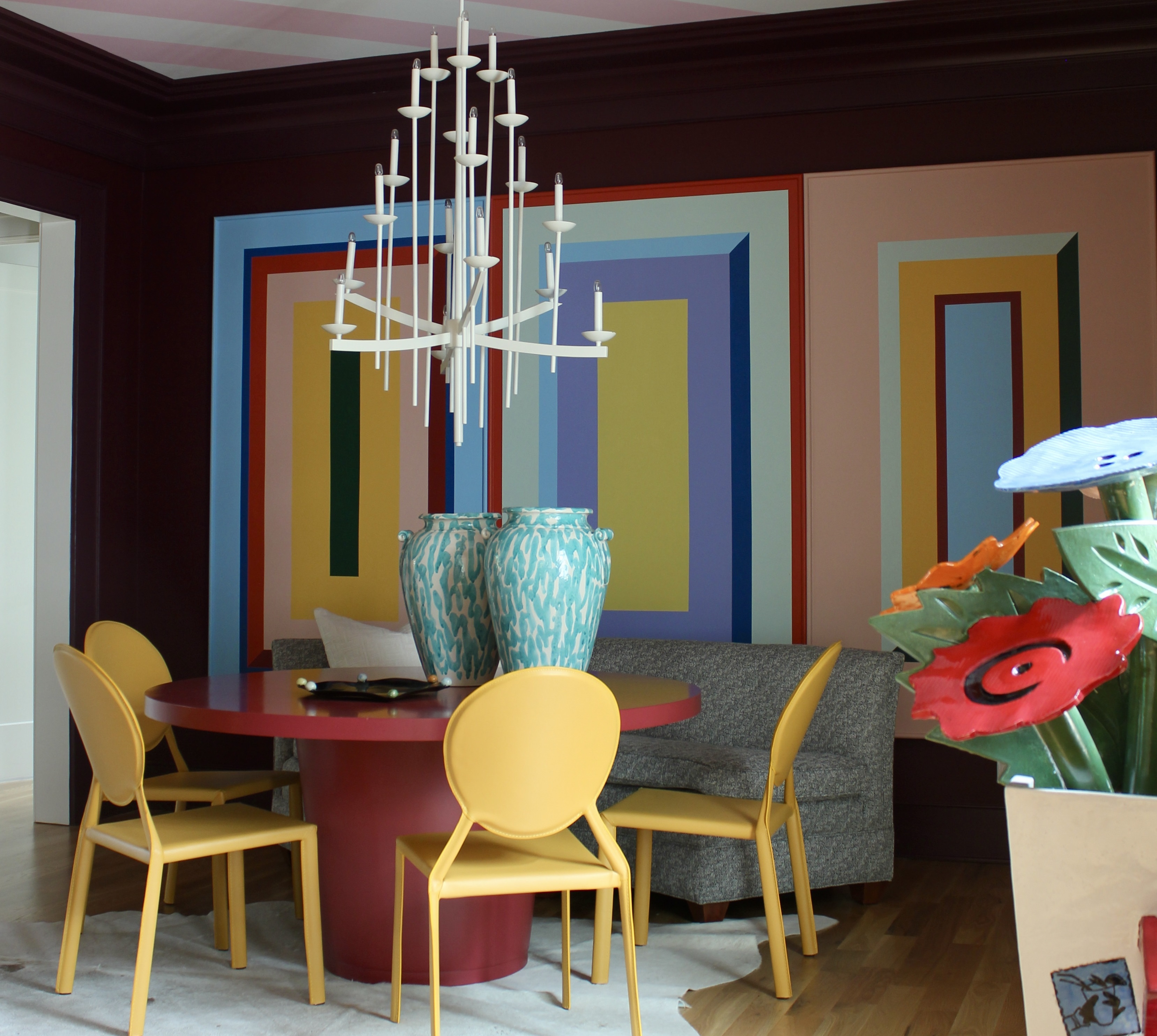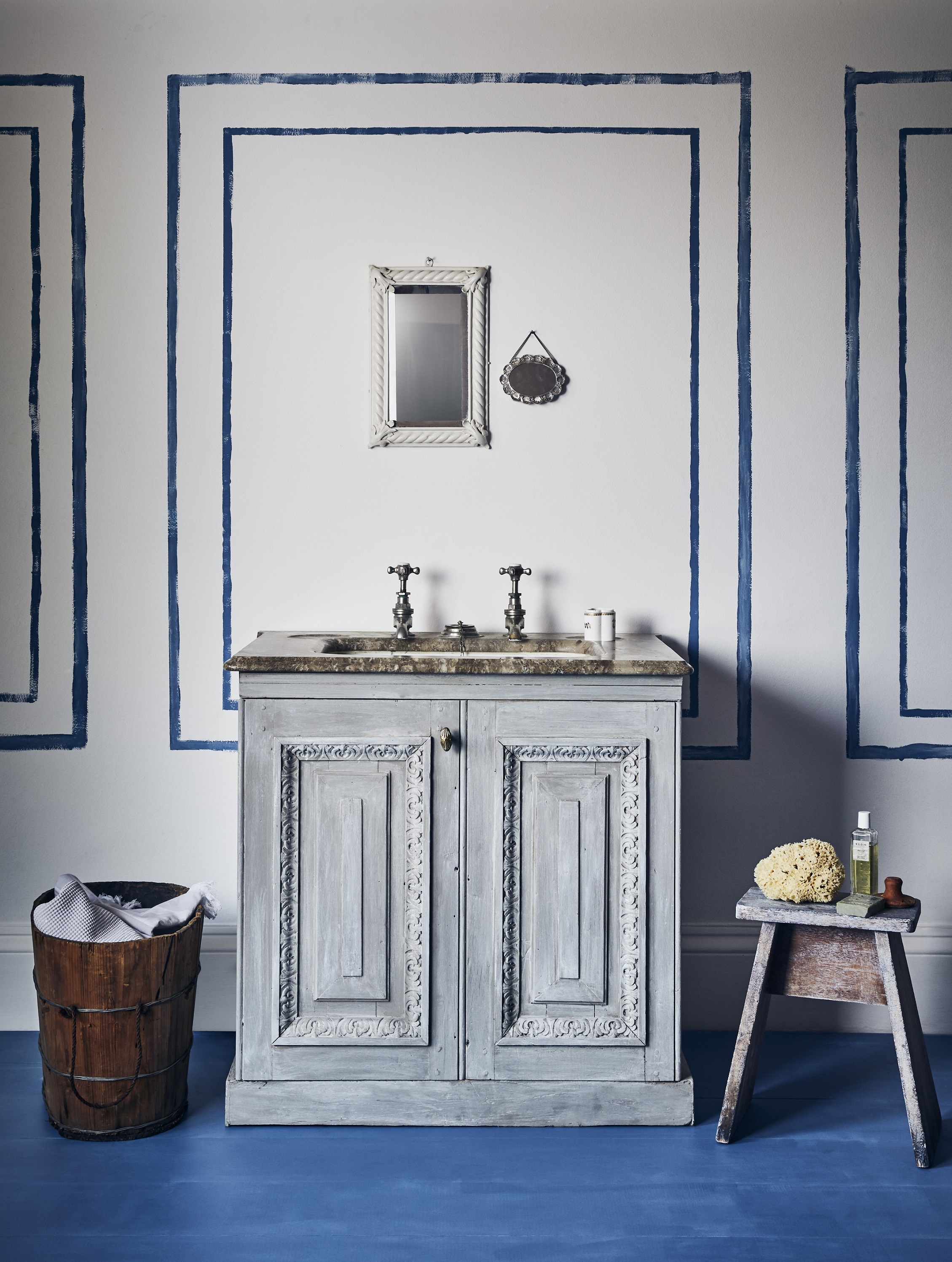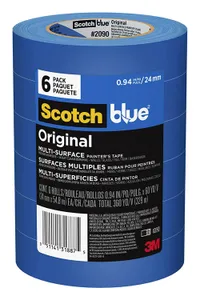Our prediction? This modern take on an age-old idea will be the next big paint trend, especially for small homes
The traditional painting technique has been given a modern twist for 2023. These experts explain how we should be embracing it


If last year's major paint trend was color drenching, then trompe l'oeil is the one that's set to dominate in 2023. A mainstay in interior design, the traditional painting technique has been given a twenty-first-century twist fit for our modern homes and it's all in the name of adding depth and dimension to our spaces. Unsurprisingly, we're totally obsessed.
The power of paint techniques is not to be underestimated. Many of us have long embraced the illusory effects made by just introducing a splash of color to the places that need it, but this paint idea steps things up a notch. Whether you're looking to foreground your favorite period feature, make a small space seem larger, or fake some wall paneling, this paint trend has got you covered.
'As a perfect hack used to add character and luxury to the interiors, trompe l’oeil is rising in popularity among the trends for 2023,' says Sarah Lloyd, paint expert and senior brand manager at Valspar. 'Colors, shading and perspective are at the core of this technique, so it’s not surprising that the best translation of "trompe l’oeil" is to “deceive the eye”.'
Curious? We spoke with leading designers to learn more about this clever technique and compiled everything you need to know, from where to use it to its origins. Here's what they had to say.

Lilith is an expert at following news and trends across the world of interior design. She regularly shares color stories with readers to help them keep up-to-date with ever-changing trends that promise to add personality into the home. For this article, she spoke with interior designers to learn more about the trompe l'oeil paint technique and how it's likely to be interpreted in our homes in 2023.
What is trompe l'oeil?

Put simply, trompe l'oeil is an artistic term for highly realistic optical illusions of three-dimensional shapes on two-dimensional surfaces. Derived from French, it's about tricking the eye into seeing heightened depth and dimension so, when applied to interior design through the likes of wallcoverings or paint techniques for walls, it can be used to accentuate architectural features by making them recede or advance.
As Patrick O'Donnell of Farrow & Ball explains, it could be in the form of more intricate yet 'realistic' designs too, 'from faux bois to more intricate stone effects such as marbling, or the exotic with malachite and tortoiseshell.'
Yet, in recent years, there's been a re-imagining of what trompe l'oeil can mean. 'Traditionally, it takes the form of very intricate artwork,' explains Helen Shaw, paint expert at Benjamin Moore, 'however, anything that uses color to accentuate or disguise features could be considered a trompe l’oeil. This technique can be very effective when used within the home as it has the power to give a room texture and depth.'
The Livingetc newsletters are your inside source for what’s shaping interiors now - and what’s next. Discover trend forecasts, smart style ideas, and curated shopping inspiration that brings design to life. Subscribe today and stay ahead of the curve.
Whether painted beading details on furniture or simply an accent wall in your living room, both of these examples can be considered a trompe l'oeil as they amplify certain features and create an illusory effect.
Why is trompe l'oeil trending in 2023?

While 2022's color drenching paint trend was all about embracing monochromatic spaces, it did have a tendency to make notable architectural features 'disappear' and blend into the background. Instead, trompe l'oeil is all about using different colors to make them pop and turn them into a statement. But why the sudden change?
'In 2023 we're expecting to see bolder color palettes and more dramatic schemes and so using color in creative ways to add dimension is a good way to introduce drama without drenching a whole space in a single tone,' explains Helen. 'This works particularly well in unusually shaped spaces such as sloping roofs, long corridors, and off-center fireplaces.'
General consensus is that we're all appreciating more intricate designs and traditional artworks too, but incorporating them through paint rather than textiles. 'We’re seeing a lot of specialist painting in the design sphere right now from beautiful marbling, tortoiseshell and lapis through to more whimsical Charletonesque painting of fire surrounds and painted screens,' says Patrick. 'It adds texture and layer to any room as much as good cloth or print can.'
Every good painter needs decent tape. For precise edges and proper protection, painter tape is a must. Use it to protect your skirting or to make intricate zig-zag patterns - whatever your heart desires.
How to decorate with trompe l'oeil techniques
1. Use it to make small spaces seem bigger
For those of us with homes on the smaller side, trompe l'oeil techniques are one of the best space-saving tricks. Although we can all agree that paint is powerful, of course, it cannot literally create more space. It can however create the illusion.
For example, if you want to give your walls the illusion of height, paint your picture rails in a statement shade that's bolder and brighter than the one only our walls to invite the eyes upwards. If you don't have picture rails, then just fake them. After all, that's what trompe l'oeil is all about. Simply use painter's tape (or a free hand if you're feeling brave) and mark out a line about three quarters of the way up your wall, then filling in with your chosen hue.

2. Accentuate your favourite features
If you're lucky enough to have a period home, it's likely that it features some beautiful architecture. From intricate moulding and coffered ceilings to dado rails and paneling, you can use trompe l'oeil to emphasize the interesting characteristics within your space.
'Enhance doors and windows by adding neoclassical-style paint effects such as painting pediments in contrast with the door frames, or add bespoke joinery in arched forms to extend the appearance of alcoves,' says Sarah at Valspar. 'Both almost effortless ways to make old features stand out.'
These clever tricks don't need to be reserved for your walls either; you could highlight the details of your furniture with a trompe l'oeil touch. Try outlining the recessed panels in your closet doors to add dimension or use a metallic hue to accentuate the beading around the drawers on your bedside table. When it comes to how to paint furniture, the possibilities are endless.
Add a splash of intense color with Farrow & Ball's Bamboozle. This fiery red offers plenty of warmth while the earthier tones within it help contribute towards a grounding space - a great advancing shade for making features pop.
3. Remember the science of color when deciding your shades
Finally, you should always bear in mind the science of color theory when it comes to picking the shades you work with. 'In terms of color combinations, it is important to consider dark colors advance whereas pale colors recede when deciding which elements need to be "brought forward" and vice versa,' says Helen.
If you want to make the beading on that bedside table pop, use warmer tones to make it advance. Cooler shades on the other hand should be reserved for making something retrocede, such as the outlines on that recessed wardrobe paneling. Darker cool tones are especially useful for adding depth to alcoved shelving.
'What you do want, if decorative, is for your endeavors to stand out,' Patrick adds. 'Think of contrasting colors that will work with all the other elements in the room you choose to experiment with this style, but the trick is to have fun!'

Lilith Hudson is a freelance writer and regular contributor to Livingetc. She holds an MA in Magazine Journalism from City, University of London, and has written for various titles including Homes & Gardens, House Beautiful, Advnture, the Saturday Times Magazine, Evening Standard, DJ Mag, Metro, and The Simple Things Magazine.
Prior to going freelance, Lilith was the News and Trends Editor at Livingetc. It was a role that helped her develop a keen eye for spotting all the latest micro-trends, interior hacks, and viral decor must-haves you need in your home. With a constant ear to the ground on the design scene, she's ahead of the curve when it comes to the latest color that's sweeping interiors or the hot new style to decorate our homes.

